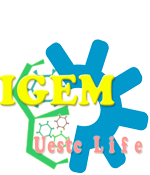FIG.1 Proposed pathway for the metabolism of lindane (-yhexachlorocyclohexane) in P. paucimobilis UT26 (352). 1,-y-Hexachlorocyclohexane; 2, y-pentachlorocyclohexene; 3, 1,3,4,6-tetrachloro-1,4-cyclohexadiene (chemically unstable); 4, 2,4,5-trichloro-2,5-cyclohexadiene-1-ol (chemically unstable); 5, 2,5dichloro-2,5-cyclohexadiene-1,4-diol;
DhaA and HheC also are cofactor-free dehalohygenase. DhaA from Rhodococcus sp hydrolyzes carbon-halogen bonds in a wide range of haloalkanes, including TCP, to the corresponding haloalcohol, releasing halide ions. Haloalcohol dehalogenase HheC from Agrobacterium radiobacter AD1 is a potentially useful enzyme involved in the degradation of several important environmental pollutants, such as 1,3-dichloro-2-propanol, 2,3-dichloropropa-
nol, 1-chloropropanol, epichlorohydrin and so on. Additionally, HheC has highly enantioselective dehalogenation of vicinal haloalcohols to epoxides, as well as the reverse reaction, the enantioselective and â-regioselective nucleophilic ring opening of epoxides by pseudo-halides such as azide and cyanide. In the synthesis of enantioselective medicine HheC being a important instrument puts it into a high gear. For the efficient degradation, we select two mutants DhaA31 and HheC/W239P, which have higher activity.18,22
In foot-and-mouth disease virus (FMDV) and some other picornaviruses the oligopeptide (~20 amino acid) 2A region of the polyprotein mediates "cleavage" at its own C-terminus to release it from the 2B region. 2A is also active when placed between reporter proteins and in all eukaryotic systems tested - it acts as an autonomous element, making it an important tool for co-ordinated synthesis of multiple proteins from one open reading frame and making a ribosome jumping. (FIG.3)In recent year, there is little report about 2A peptide sequence that is active in prokaryotic systems, even some paper stated 2A sequence can’t work in prokaryotic. But Indian Scientist Dechamma et.1 have found the T2A peptide can work in E.coli, which give us creative advice.
Modular bacterial polycistronic expression system allows coexpression and copurification of multiple polypeptides in E. coli from a single expression plasmid. The system is comprised of the polycistronic expression vector and a transfer vector which facilitates subcloning of component genes into the polycistronic expression vector. Restriction sites present in the polycistronic expression vector allow both affinity tagged and untagged complexes to be overexpressed. In this project, 2A peptide sequence working in E.coli is just a exploration without guaranty from sufficient evident. Polycistroinc expression is the next way to achieve multi-enzyme co-expression.
1.H J Dechamma. 2007. Processing of multimer FMD virus VP1-2A protein expressed in E.coli into monomers. Indian Journal of Experimental Biology.
2.Rup Lal,Gunjan Pandey,Pooja Sharma,Kirti Kumari,Shweta Malhotra,Rinku Pandey.Mar.2010,
Biochemistry of Microbial Degradation of HexachlorocyclohexaneMICROBIOLOGY AND MOLECULARBIOLOGY REVIEWS p. 58-80 Vol. 74, No. 11092-2172/10/$12.00 doi:10.1128/MMBR.00029-09
and Prospects for Bioremediation
3. Li, Y. F.1999. Global technical hexachlorocyclohexane usage and its contamination consequences in the environment: from 1948 to 1997. Sci. Total Environ.232:121-158.
4.Vijgen, J., L. F. Yi, M. Forter, R. Lal, and R. Weber.2006. The legacy of lindane and technical HCH production. Organohalog. Comp.68:899-904.
5.Ware, G. W. (ed.).1989. The pesticide book. Thomson Publications,Fresno, CA.
6.Weber, R., C. Gaus, M. Tysklind, P. Johnston, M. Forter, H. Hollert, H.Heinisch, I.Holoubek, M. Lloyd-Smith, S. Masunaga, P. Moccarelli, D.Santillo, N. Seike, R. Symons, J. P. M. Torres, M. Verta, G. Varbelow, J.Vijgen, A. Watson, P. Costner, J. Woelz, P. Wycisk, and M. Zennegg.2008.Dioxin- and POP-contaminated sites-contemporary and future relevance
and challenges. Environ. Sci. Pollut. Res.15:363-393.
7.Wu, W. Z., Y. Xu, K.-W. Schramm, and A. Kettrup.1997. Study of sorption,
biodegradation and isomerization of HCH in stimulated sediment/water
system. Chemosphere35:1887-1894
8.76.Lammel, G., Y. S. Ghimb, A. Gradosa, H. Gaod, H. Hu¨hnerfussc, and R.
Lohmann.2007. Levels of persistent organic pollutants in air in China and
over the Yellow Sea. Atmos. Environ.41:452-464
9.79.Li, J., T. Zhu, F. Wang, X. H. Qiu, and W. L. Lin.2006. Observation of
organochlorine pesticides in the air of the Mt. Everest region. Ecotoxicol.
Environ. Safe.63:33-41
10.71.Kumari, B., V. K. Madan, and T. S. Kathpal.2007. Status of insecticide
contamination of soil and water in Haryana, India. Environ. Monit. Assess.
136:239-244
11.139.Prakash, O., M. Suar, V. Raina, C. Dogra, R. Pal, and R. Lal.2004.
Residues of hexachlorocyclohexane isomers in soil and water samples from
Delhi and adjoining areas. Curr. Sci.87:73-77.
12.144.Raina, V., M. Suar, A. Singh, O. Prakash, M. Dadhwal, S. K. Gupta, C.
Dogra, K. Lawlor, S. Lal, J. R. van der Meer, C. Holliger, and R. Lal.2008.
Enhanced biodegradation of hexachlorocyclohexane (HCH) in contaminated soils via inoculation withSphingobium indicumB90A. Biodegradation 19:27-40
13.175.Toteja, G. S., A. Mukherjee, S. Diwakar, P. Singh, and B. N. Saxena.2003.
Residues of DDT and HCH pesticides in rice samples from different geographical regions of India: a multicentre study. Food Addit. Contam.20:
933-939.
14.17.Blasco, C., C. M. Lino, Y. Pico, A. Pena, G. Font, and M. I. Silveira.2004.
Determination of organochlorine pesticide residues in honey from the
central zone of Portugal and the Valencian community of Spain. J. Chromatogr. A1049:155-160
15.7.Bajpai, A., P. Shukla, B. S. Dixit, and R. Banerji.2007. Concentrations of
organochlorine insecticides in edible oils from different regions of India.
Chemosphere67:1403-1407.
16.15.Bhatnagar, V. K., R. Kashyap, S. S. Zaidi, P. K. Kulkarni, and H. N.
Saiyed.2004. Levels of DDT, HCH, and HCB residues in human blood in
Ahmedabad, India. Bull. Environ. Contam. Toxicol.72:261-265.
17.169.Subramaniam, K., and R. D. J. Solomon.2006. Organochlorine pesticides
BHC and DDE in human blood in and around Madurai, India. Indian
J. Clin. Biochem.21:169-172.
18.Tjibbe Bosma,Jir Damborsky,Gerhard Stucki,and Dick B. Janssen.2002.Biodegradation of 1,2,3-Trichloropropane through Directed Evolution and Heterologous Expression of a Haloalkane Dehalogenase Gene APPLIED ANDENVIRONMENTALMICROBIOLOGY,p. 3582-3587 Vol. 68, No. 7
0099-2240/02/$04.000 DOI: 10.1128/AEM.68.7.3582-3587.2002
19.Cooke, Mary,2009. ?Emerging Contaminant--1,2,3-Trichloropropane (TCP)? (Report). United States EPA.
20.Agency for Toxic Substances and Disease Registry (1992). Toxicological Profile for 1,2,3-Trichloropropane? (Report). U.S. CDC.
21. Basic Questions and Answers for the Drinking Water Strategy Contaminant Groups Effort (Report). US EPA. 2011.
22.Tang L, van Merode AE, Lutje Spelberg JH, Fraaije MW, Janssen DB.2003.Steady-state kinetics and tryptophan fluorescence properties of halohydrin dehalogenase from Agrobacterium radiobacter. Roles of W139 and W249 in the active site and halide-induced conformational change.Biochemistry.42(47):14057-65.

 FIG.2
FIG.2
 "
"

